The history of the sewing machine is one littered with accusations, failed attempts and some serious scandal. From narrowly escaping death to patent law suits, it’s an interesting story that demonstrates the seam-ingly humble sewing machine ruffled more than a few feathers in its infancy.
A 20,000 year old art form
The history of the sewing machine wouldn’t exist without the artistry of hand sewing. People started sewing by hand some 20,000 years ago, where the first needles were made from bones or animal horns and the thread made from animal sinew. Our inventive instinct explains the natural progression to want to improve sewing techniques and make it less laborious. Cue the Industrial Revolution in the 18th Century, where the need to decrease manual sewing in factories became paramount.
1755: The First Patent
Charles Weisenthal, a German man, was issued a British patent for a “needle that is designed for a machine.” There’s no description in Weisenthal’s patent of any mechanical machine, but it shows there was a need for such an invention.
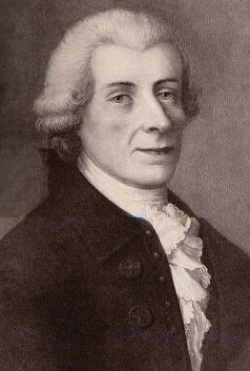
1790: The First Detailed Design
The history of the sewing machine essentially starts here. Englishman Thomas Saint designed the first sewing machine of its kind. The patent described a machine powered with a hand crank to be used for leather and canvas. Nobody knows if Saint built a prototype, but in 1874, William Newton Wilson found the patent drawings. They were so detailed, he built a replica, proving that it did work.
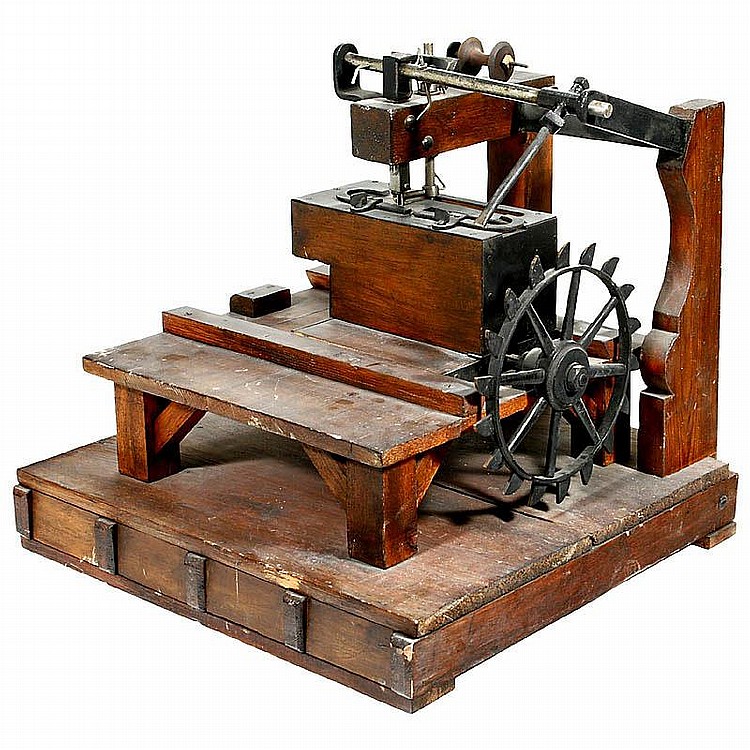
Early 18th Century: Many Attempts, Many Fails
It’s worth mentioning that all attempts of designing a sewing machine before the first successful one, all moved the needle side to side and were powered with a winding handle.
- 1810: Balthasar Krems invents an automatic machine for sewing caps. He didn’t patent his design but it didn’t work anyway.
- 1814: An Austrian tailor, Josef Madersperger, was issued a patent in 1814. He was persistent, attempting several different designs, but all were unsuccessful.
- 1818: John Adams Doge and John Knowles invent America’s first sewing machine, but it could only sew a few bits of fabric before breaking.

1830: The First Successful Sewing Machine
Joy! 40 years since Thomas Saint first drew and described a machine for sewing, we finally have a functioning sewing machine. Barthelemy Thimonnier, a French tailor, invented a machine that used a hooked needle and one thread, creating a chain stitch.
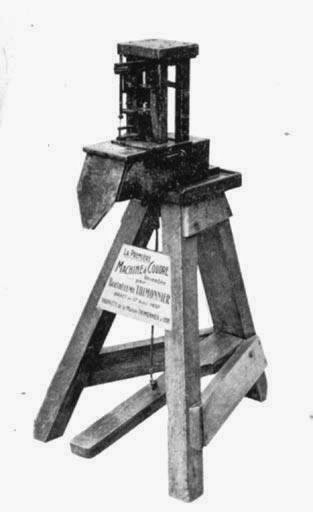
1830: A Riot & Near Death Experience
After the successful patent, Thimonnier opened the world’s first machine based clothing manufacturing company. His job was to create uniforms for the French Army. But when other French tailors got wind of his invention, they weren’t too pleased. They feared his machine would result in their unemployment so they burnt down his factory whilst he was still inside. Never take your sewing machine for granted ever again; this guy almost died for it.
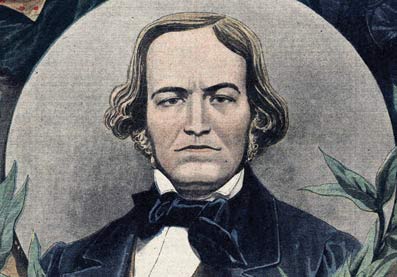
1834: Morals Over Money
This is an example of sticking true to your beliefs. Walter Hunt created America’s first functioning sewing machine, but he had second thoughts. Hunt thought such a machine would cause unemployment for many, so he didn’t bother to patent the design. Now you see where things are going to get messy.
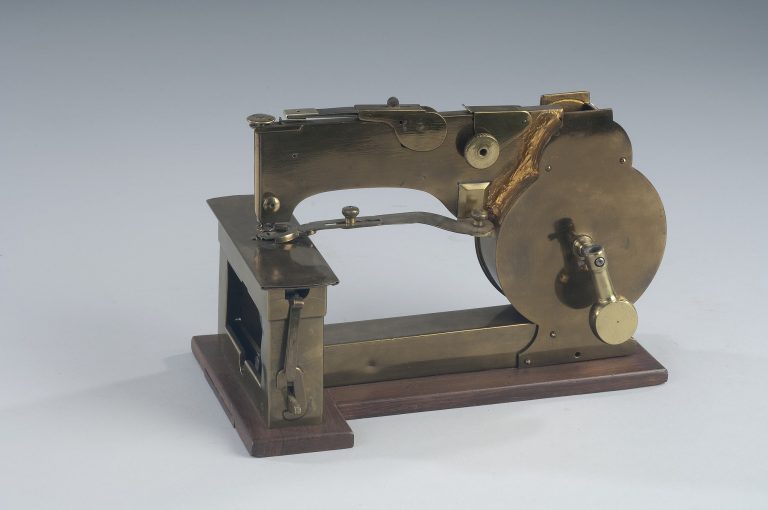
1844: A Lost Patent
The sewing machines we’ve seen so far are all made up of disjointed elements, with nothing really working together. In 1844, English inventor John Fisher designed a sewing machine that would eliminate this disparity between the moving parts. However, a botched filing job at the Patent Office resulted in his patent getting lost, so he never received any recognition.
1845: Elias Howe & the Lockstitch

Elias Howe from America invents a sewing machine that resembles Fisher’s, with some tweaks and adjustments. His patent was to invent “a process that uses thread from 2 different sources.” His machine has a needle with an eye at the point, which goes through the fabric creating a loop on the reverse, a shuttle on a track that slips the second thread through the loop, creating what is called the lockstitch.
He struggled to market his design, so he took the plunge and sailed to England. After a lengthy stay, he returned to his motherland only to find others had copied his lockstitch mechanism. One of those was an Isaac Merritt Singer.
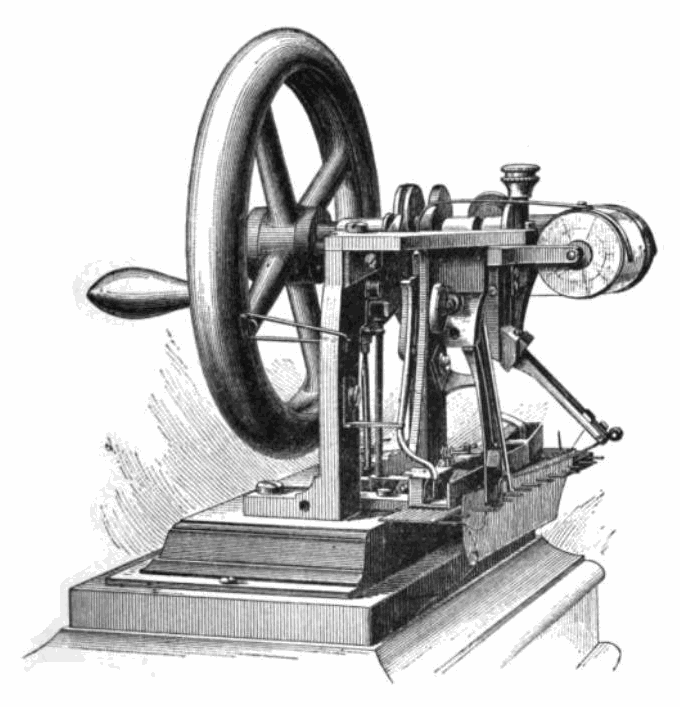
1851: Introducing Isaac Singer
Isaac Merritt Singer is one of the most well-known sewing machine manufacturers, building an empire that is still going today. His iconic Singer sewing machines are beautifully ornate and somewhat legendary. He developed the first version of our modern day sewing machine, with a foot pedal and the up-and-down needle. He was also inspired by elements from the Howe, Hunt and Thimonnier inventions, causing Howe to file a lawsuit.

1854: A Real Stitch Up
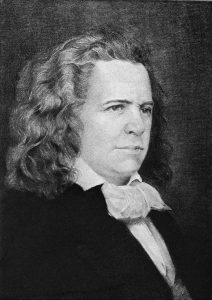
Elias Howe took Singer to court for Patent Infringement, where he defended his case and won. Isaac Singer tried to refer back to Walter Hunt’s design, expressing that Howe infringed upon his idea. Unfortunately for Singer, this didn’t have any impact at all. The lack of patent on Hunt’s design meant it was intellectual property for anybody to use.
What’s interesting is that if John Fisher’s patent hadn’t have been filed wrong in the Patent Office, he too would have been involved in the law suit as both Howe and Singer’s designs were near enough identical to the one Fisher invented.
Consequently, Singer was forced to pay a lump sum of patent royalties to Howe, as well as giving him a share in the I.M. Singer & Co profits.
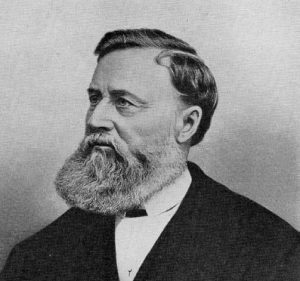
Despite all the allegations, drama and legal disputes, Howe and Singer both died multimillionaires, and each of these pioneering inventors gave the world the sewing machine. Without the early failed attempts and sheer persistence to create something that would relieve the women and factory workers of long, perilous hours, who knows what our clothing manufacturing industry would look like today. The history of the sewing machine is a complicated one, and as a result, many enthusiasts still debate who can claim the title of the real inventor. Our stance? We’re just glad we still don’t have to use animal sinew and bones.
Feeling inspired to sew? Click the picture below to order a swatch pack of our fabrics.




Thanks Rachel for this interesting post- I am writing a novel set in Melbourne, but with references to London and Paris and am interested in developments in the garment industry 1840-1860 and it seems the invention of the sewing machine is front and centre of this period. Do you have any thoughts on popular fabrics or styles at the time? Thanks again from Moira McAlister
Thank you for this interesting article
Thanks for all the information about the seeing machine. I’m 78 and been sewing since I was 4 years old ( by hand then) I worked for Singer in Jersey (C I) when I was very young. I love sewing and machines! I have recently purchased a Brother Innovis, and I’m really enjoying working on it. I have 4 sewing machines and 2 overlockers!